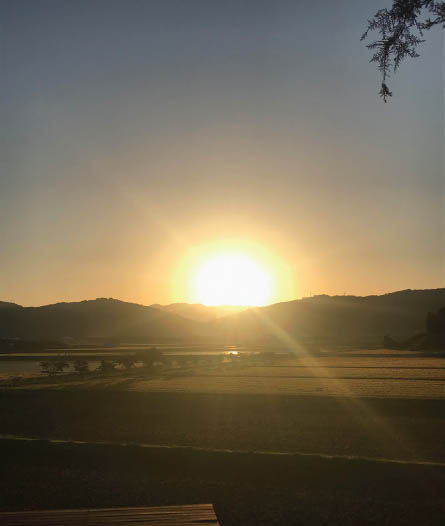NAOMI ITO TEXTILE
NANI IRO
OSAKA, JAPAN
Naomi Ito reads the poetry of nature and translates it into designs on cloth. She learned to draw by studying the pictures on the walls of cafés or the murals in stores and continued her practice through college classes. She originally intended to be a picture-book author and illustrator and showed her work for the first time in 1994, at exhibitions in Osaka, Tokyo, and Paris. Several years later, she assembled a portfolio of her art for submission to publishers. A friend passed the portfolio on to Kokka, a textile manufacturer in Osaka, and she was soon offered a job there in textile design. While she was considering the offer from Kokka, her mother shared the fact that her grandfather had been a textile designer, providing the impetus for Naomi to embark on her career in textiles.
In 2002, her brand for Kokka, nani IRO, made its debut. Nani, from the Hawaiian language, means “beauty” or “splendor,” and iro ( ) is the Japanese word for “color” and “harmony.” Through nani IRO, Naomi has released at least 800 specific colorings of more than 175 designs. Her annual collection launches in February each year.
) is the Japanese word for “color” and “harmony.” Through nani IRO, Naomi has released at least 800 specific colorings of more than 175 designs. Her annual collection launches in February each year.
Naomi’s home is surrounded by nature, and she takes inspiration each day from the morning light. Her family owns a small organic orchard, where herbs are grown under the trees. “The movements of my brush are inspired by the growing process of the fruits or plants, with changing colors day by day,” Naomi says. She translates impressions from her five senses into drawings: “The motifs are based on daily life and range from the shapeless, such as the feeling of the air or gradations of light and mist, to defined shapes, such as flowers or fruits that I grow.”
“Our textiles are treated as a single work of art that uses graphic compositions to fully express its beauty and features color schemes that capture silhouettes of nature, a paint-like, tone-on-tone style, and gentle lines.”
Naomi working on the art for her print “Komorebi”
“Komorebi—the sunshine that shines through the leaves—is like rainbow-color wind or a fragrant breeze. It brings forth nice feelings, which reminds us of those days we all surely miss. Lights dance, and flowers start to sing with delight. This textile brings out such a calm and quiet happiness.”
Naomi starts her designs by sketching on white paper. She then paints with watercolors or draws with ink. She creates collages of her paintings and drawings and uses color photocopies to experiment with the scale of a motif or pattern, taking into consideration “what is a comfortable rhythm to wear or touch” and continuing to cut and paste until she achieves her final design.
Instincts and feelings guide Naomi from an initial sketch through the design process to a finished textile. She does not compromise on any aspect of her work and will revise a design until it perfectly represents her vision for the piece. Through this process, Naomi remains motivated by “the excitement of the moment of completing the designed textile.”
nani IRO cloth may include more than twenty colors in a single design. Naomi carefully chooses each color from a set of cloth color samples: “The only criteria for choosing a color are my fantasy and my imagination.” When fabrics are printed, a separate screen must be used to apply each color. At times, colors may appear to shift in value or hue based on proximity to other colors. Naomi works closely with the printing factory to ensure that the colors on the final cloth meet her exact specifications.
Naomi also carefully considers the base fabric for each design, choosing one that reflects the mood or character of the piece and how it will be used for sewing. The texture of the cloth against the skin is another consideration. These substrates include lightweight cotton double gauze or lawn and semi-sheer to medium weights of pure linen, sateen, and jacquard-woven cottons. Naomi also incorporates traditional Japanese techniques such as enshuku, or salt shrinking, to create a seersucker-like texture on lightweight fabrics.
Naomi’s paintings capture images and impressions of nature and then evolve into textile designs. Each design is suffused with her wonder and joy at nature’s ever-changing variety. Naomi thinks of them as poems or letters from her soul, creating a connection with someone in a faraway land through the joy of choosing, making, and giving.
“My hobby is to have my teatime. I am learning about Chinese tea. This artistic and silent time is important to me. When I draw pictures, I always prepare tea. I will choose tea leaves based on each day’s condition, and I will adjust my mind while preparing tea before I start drawing.”
